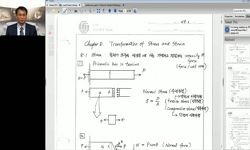공공예술은 모두를 위한 예술이라는 별칭을 가지고 있다. 공공성이 자유롭고 평등한 모두의 접근을 허용하는 개방성을 갖고 있기 때문이다. 그렇다면 공공성을 평가하는 일은 곧 ‘배제’...
http://chineseinput.net/에서 pinyin(병음)방식으로 중국어를 변환할 수 있습니다.
변환된 중국어를 복사하여 사용하시면 됩니다.
- 中文 을 입력하시려면 zhongwen을 입력하시고 space를누르시면됩니다.
- 北京 을 입력하시려면 beijing을 입력하시고 space를 누르시면 됩니다.
https://www.riss.kr/link?id=A109220107
-
저자
김동규 (동서대학교 중국연구센터 학술연구교수)
- 발행기관
- 학술지명
- 권호사항
-
발행연도
2024
-
작성언어
Korean
-
주제어
서발터니티 ; 임계 ; 장소성 ; 공공성 ; 공공예술 ; subalternity ; criticality ; placeness ; publicness ; public art
-
등재정보
KCI등재
-
자료형태
학술저널
- 발행기관 URL
-
수록면
143-175(33쪽)
- DOI식별코드
- 제공처
-
0
상세조회 -
0
다운로드
부가정보
국문 초록 (Abstract)
서발터니티의 장소성은 주로 주변, 경계 등과 결부된다. 그래서 서발터니티의 장소는 경계지와 밀접한 연관을 맺기 마련이다. 그 대표적인 장소가 관문도시다. 따라서 이 글은 서발터니티의 장소성을 드러내면서, 이 글이 작성되고 있는 관문도시 부산의 서발터니티를 추적하고 있다. 그 교점에서 완월동을 다루는 부산의 공공예술 사례가 언급된다. 이 글은 여기서 더 나아가 공공예술 전체가 그런 장소성을 주요한 임계의 감각으로 활용한다는 것을 언급함으로써 다양한 공공예술의 사례와 임계적 공공성의 등장을 설명한다.
결과적으로 공공예술은 임계의 감각을 활용하여 새로운 감각을 보여주고, 이를 통해 새로운 의미 생성을 요구한다. 이는 기존 공공성에 임계를 제공하여 특정 지역과 사회에 새로운 공공성을 창출하도록 촉구한다. 이 지역과 사회의 스펙트럼은 매우 유동적이고 중층적이다. 공공예술은 임계적 공공성을 근간으로 합리성 중심의 공론장을 넘어설 뿐만 아니라, 합리적 공공성에 우선한다. 그러므로 공공예술의 공공성은 임계적 공공성에 대한 감각 없이 자신의 공적 역량을 제대로 발휘할 수 없다.
공공예술은 모두를 위한 예술이라는 별칭을 가지고 있다. 공공성이 자유롭고 평등한 모두의 접근을 허용하는 개방성을 갖고 있기 때문이다. 그렇다면 공공성을 평가하는 일은 곧 ‘배제’의 흔적을 살피는 일이다. 이를 위해 이 글은 배제된 존재를 규정하는 서발터니티라는 개념을 먼저 살펴본다. 여기서 서발터니티는 ‘임계’와 ‘전복성’을 드러낼 것이다. 이것은 공공예술계 내부의 전복성과, 공공예술이 작동하는 사회를 향한 전복성과 연결된다. 이어서 이러한 임계와 전복성의 감각을 드러내는 데 예술이 특화되어 있음을 보여준다. 특히 서발터니티가 ‘장소성’과 관련되는데, 공공예술도 장소와 밀접한 관련이 있다는 점에서 두 개념은 연결될 여지가 많다.
서발터니티의 장소성은 주로 주변, 경계 등과 결부된다. 그래서 서발터니티의 장소는 경계지와 밀접한 연관을 맺기 마련이다. 그 대표적인 장소가 관문도시다. 따라서 이 글은 서발터니티의 장소성을 드러내면서, 이 글이 작성되고 있는 관문도시 부산의 서발터니티를 추적하고 있다. 그 교점에서 완월동을 다루는 부산의 공공예술 사례가 언급된다. 이 글은 여기서 더 나아가 공공예술 전체가 그런 장소성을 주요한 임계의 감각으로 활용한다는 것을 언급함으로써 다양한 공공예술의 사례와 임계적 공공성의 등장을 설명한다.
결과적으로 공공예술은 임계의 감각을 활용하여 새로운 감각을 보여주고, 이를 통해 새로운 의미 생성을 요구한다. 이는 기존 공공성에 임계를 제공하여 특정 지역과 사회에 새로운 공공성을 창출하도록 촉구한다. 이 지역과 사회의 스펙트럼은 매우 유동적이고 중층적이다. 공공예술은 임계적 공공성을 근간으로 합리성 중심의 공론장을 넘어설 뿐만 아니라, 합리적 공공성에 우선한다. 그러므로 공공예술의 공공성은 임계적 공공성에 대한 감각 없이 자신의 공적 역량을 제대로 발휘할 수 없다.
다국어 초록 (Multilingual Abstract)
Placeness of subalternity is mainly associated with marginal places or boundaries. Therefore, places of subalternity are closely related to borderlands. The representative place is the gateway city. Therefore, this article reveals the placeness of subalternity and traces some of the subalternity of Busan, the gateway city where this article is written. At that intersection, an example of public art in Busan dealing with Wanwol-dong is mentioned. This article goes further to explain various examples of public art and the emergence of critical publicness by mentioning that public art as a whole utilizes such sense of place as a major criticality.
As a result, public art shows new senses by utilizing critical senses, and through this, requires the creation of new meaning. This provides a threshold for existing publicness and urges the creation of new publicness in specific palces and societies. The spectrum of this palces and society is very fluid and multi-layered. I defined this as critical publicness, which not only goes beyond the rationality-centered public sphere, but also takes precedence over rational public sphere. Therefore, the publicness of public art cannot properly demonstrate its public capacity without a sense of critical publicness.
Public art is nicknamed art for everyone. This is because publicness has openness that allows free and equal access to all. In that case, evaluating publicness means examining traces of ‘exclusion.’ In this way, this article first examines the con...
Public art is nicknamed art for everyone. This is because publicness has openness that allows free and equal access to all. In that case, evaluating publicness means examining traces of ‘exclusion.’ In this way, this article first examines the concept of subalternity, which defines excluded beings. Here, subalternity will reveal its ‘criticality’ and ‘subversiveness.’ This will be connected to the subversiveness within the public art world and the subversiveness toward the society in which public art operates. Next, this article shows that art specializes in revealing this sense of criticality and subversiveness. In particular, since subalternity shows that it is related to ‘placeness,’ there are many public art works that are connected to placeness.
Placeness of subalternity is mainly associated with marginal places or boundaries. Therefore, places of subalternity are closely related to borderlands. The representative place is the gateway city. Therefore, this article reveals the placeness of subalternity and traces some of the subalternity of Busan, the gateway city where this article is written. At that intersection, an example of public art in Busan dealing with Wanwol-dong is mentioned. This article goes further to explain various examples of public art and the emergence of critical publicness by mentioning that public art as a whole utilizes such sense of place as a major criticality.
As a result, public art shows new senses by utilizing critical senses, and through this, requires the creation of new meaning. This provides a threshold for existing publicness and urges the creation of new publicness in specific palces and societies. The spectrum of this palces and society is very fluid and multi-layered. I defined this as critical publicness, which not only goes beyond the rationality-centered public sphere, but also takes precedence over rational public sphere. Therefore, the publicness of public art cannot properly demonstrate its public capacity without a sense of critical publicness.
동일학술지(권/호) 다른 논문
-
온실가스 배출권거래제 정책형성과정에 관한 연구 - 정책중개자의 역할을 중심으로 -
- 국립부경대학교 인문사회과학연구소
- 남광희
- 2024
- KCI등재
-
ノダ의 본질과 타당성 검증- 関連性理論을 기저(基底)로 -
- 국립부경대학교 인문사회과학연구소
- 이진경
- 2024
- KCI등재
-
내기물에서 폐기물이 된 경계인: 정율성 사업을 둘러싼 논쟁에 대한 소고
- 국립부경대학교 인문사회과학연구소
- 이희경
- 2024
- KCI등재
-
- 국립부경대학교 인문사회과학연구소
- 유미경
- 2024
- KCI등재





 KCI
KCI 스콜라
스콜라






